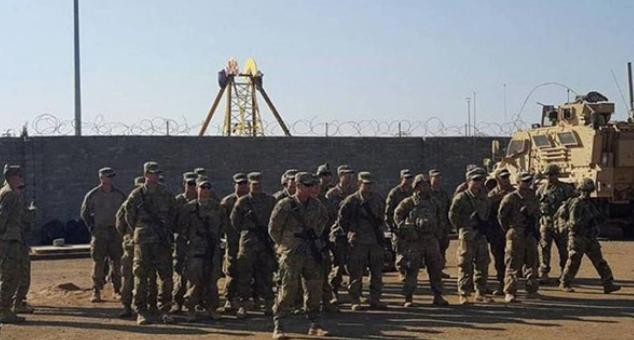Mustafa Kamel
Fears have grown of the return of ISIS to Iraq in conjunction with the American withdrawal, as the current role of Washington in Iraq lies in enabling the security forces to ensure that the terrorist organization does not return again, in addition to providing advice and intelligence information, at a time when the border strip between Iraq and Syria still represents a danger.
US-Iraqi cooperation
US Ambassador to Iraq Matthew Tueller confirmed that his country’s forces have accomplished many wonderful things since 2014 thanks to the US-Iraqi cooperation.
During an interview with the US-based Alhurra channel, the ambassador added that the countries neighboring Iraq want to see the activities of the armed militias under the control of the Iraqi government, saying, “The Iraqi security forces and the Peshmerga were partners in defeating ISIS, but there must be stronger coordination, and we hope that our engagement in Iraq will help develop the Iraqi forces and the Peshmerga forces.”
Tueller noted that ISIS poses a threat to Iraq and Syria, as it carried out many attacks on military facilities in Diyala and in other areas that are not under control between the Iraqi federal and Kurdish lines.
On the other hand, the Iraqi joint operations revealed that the security forces had succeeded in preventing the infiltration of ISIS elements from Syria into Iraq. Major General Tahsin al-Khafaji, spokesman for the Joint Operations Command, said that the Iraqi-Syrian border file is an important file supervised by the Joint Operations Command, along with the security operation that the Border Forces Command carried out in controlling the Iraqi-Syrian border through proactive and qualitative operations.
Khafaji pointed out that the Iraqi army had recently succeeded in stopping a large part of the infiltration operations after it managed to arrest many ISIS elements on the Syrian-Iraqi border.
Regarding the control of the Syrian-Iraqi borders, Khafaji confirmed in statements that the Joint Operations Command activated the intelligence effort in following up on terrorist organizations, from which ISIS elements are trying to cross into Iraq.
In late August, the Iraqi authorities announced the launch of a security operation on the border strip with Syria, with the participation of the army and border guard forces, which included the border strip within the Triangle of Death, which are the areas in which ISIS remnants are active, located between the governorates of Salah al-Din, Kirkuk and Diyala.
Unusual ISIS movements
During the first week of September, unusual movements by ISIS appeared with three specific attacks carried out in three Iraqi cities, one of which almost ended with the control of a village north of Diyala. These attacks resulted in the killing and wounding of about 20 soldiers, including officers and tribal mobilization members. Army planes participated in repelling the attacks.
Despite the implementation of military campaigns and the combing of some security-fragile areas, the attacks escalated in the areas north of the capital during the past two weeks. In some attacks, the militants used ambushes to inflict the largest number of victims, while the withdrawal was carefully planned.
Abdul-Khaleq al-Azzawi, a member of the Iraqi Parliament’s Security Committee, confirmed that there have been nine villages empty of their residents since 2014, as ISIS exploits the migration of people from those areas to hide and launch attacks on other villages and towns.
These attacks come as the government and the military leadership announced the start of security preparations to protect the elections scheduled to take place in less than a month.








































admin in: How the Muslim Brotherhood betrayed Saudi Arabia?
Great article with insight ...
https://www.viagrapascherfr.com/achat-sildenafil-pfizer-tarif/ in: Cross-region cooperation between anti-terrorism agencies needed
Hello there, just became aware of your blog through Google, and found ...